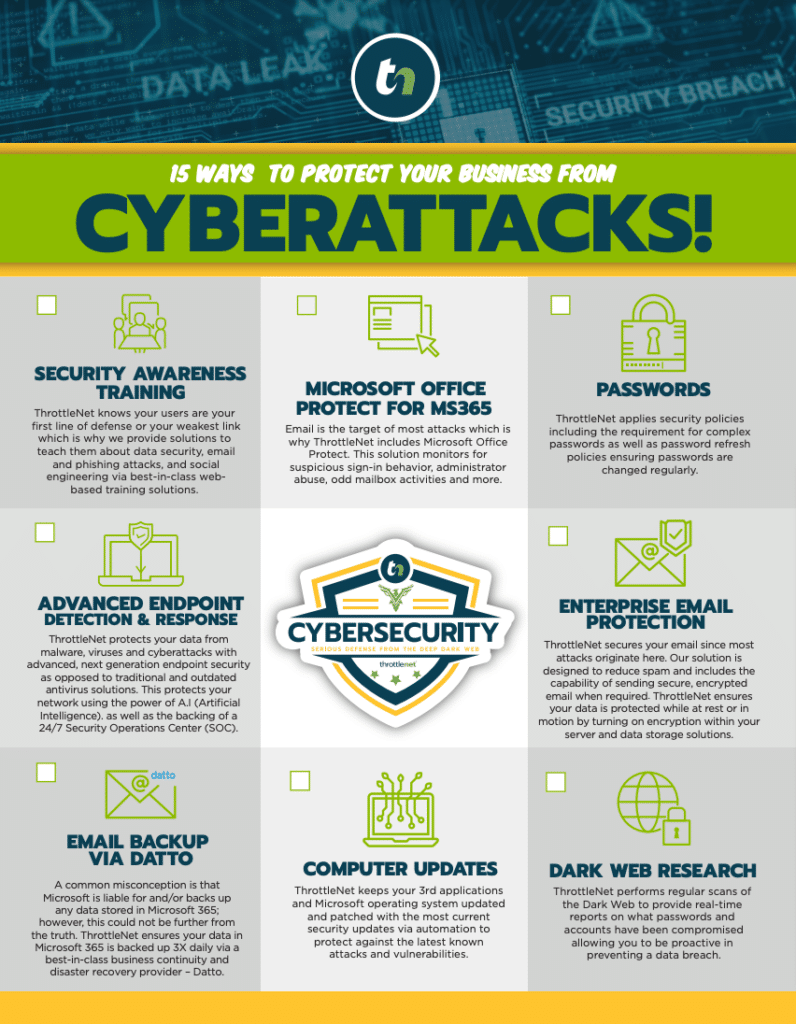Websites can be vulnerable to a variety of cyber threats. One of the most common ways is caused because a site is infected with malware. In today’s digital landscape, websites serve as the primary online face of a business, and maintaining their security is essential. Malware, short for malicious software, is used by cybercriminals to exploit websites and cause significant harm to both the business and its users. In this article, we’ll explore how websites become infected with malware, why threat actors target websites, and what businesses can do to protect themselves.

How Websites Get Infected with Malware
There are several methods that threat actors use to infect websites with malware. These can range from exploiting vulnerabilities in outdated software to using social engineering tactics to trick website administrators into unknowingly installing malware.
1. Exploiting Vulnerabilities in Software
One of the most common ways websites become infected with malware is through vulnerabilities in website software, such as content management systems (CMS) like WordPress, Joomla, or Drupal. These platforms, if not regularly updated, can have security holes that hackers exploit to inject malicious code into the site. Once the malware is installed, it can be used to steal data, take control of the site, or infect visitors’ devices.
2. Compromised Plugins or Themes
Plugins and themes extend the functionality and design of a website, but if not obtained from reputable sources or kept updated, they can introduce significant vulnerabilities. Threat actors often target poorly secured plugins to inject malicious scripts that can infect the website.
3. Phishing and Social Engineering
Attackers may use phishing tactics to trick website administrators or employees into clicking on malicious links or downloading malware disguised as legitimate software updates. This malware can then infiltrate the website’s backend, allowing the attacker to compromise the system.
4. Cross-Site Scripting (XSS)
Cross-Site Scripting (XSS) is a method where attackers inject malicious scripts into websites, typically in user input fields. When users visit the website that is infected with malware and interact with the compromised elements, the malicious script runs in their browser, potentially stealing sensitive information or redirecting them to phishing sites.
5. SQL Injection
SQL injection is another common attack vector. Hackers exploit vulnerabilities in a website’s database layer by inserting malicious SQL code into input fields. This code can be used to extract sensitive data, bypass login credentials, or even take over the entire website.
6. Weak Passwords
Websites that use weak or easily guessable passwords are also vulnerable to brute-force attacks. Once a hacker gains access to the website’s administration panel, they can upload malware, modify site content, or take control of key systems.
Why Threat Actors Infect Websites
Hackers have various motives for infecting websites with malware. Understanding their intentions can help businesses grasp the potential consequences of an infection.
Data Theft
One of the primary motivations for infecting a website is to steal sensitive data such as customer information, credit card details, or personal identification. Once stolen, this data can be sold on the dark web or used for identity theft and fraud.
Financial Gain
Many cybercriminals infect websites with malware to make money. For example, some malware types display advertisements or redirect users to affiliate sites, generating ad revenue for the hacker. Others may install cryptojacking scripts that secretly mine cryptocurrency using visitors’ processing power.
Spreading Malware to Website Visitors
In some cases, hackers infect websites to spread malware to visitors. For example, an attacker could inject a malicious download link into a website. When visitors click the link, they unknowingly download malware, which could lead to further infections or compromise their devices.
SEO Poisoning
Hackers may use malware to manipulate search engine results, a tactic known as SEO poisoning. By injecting malicious links into a website, they can redirect traffic to other malicious websites, hijacking search engine rankings for specific terms.
Ransomware and Extortion
In some instances, hackers may install ransomware on a website, locking the site’s content until a ransom is paid. This can disrupt business operations, damage the company’s reputation, and incur significant financial losses.
Hacktivism and Vandalism
Hackers with ideological motivations may infect websites as part of hacktivism efforts. This could involve defacing the site or using it to spread political messages or misinformation.
How Businesses Can Protect Themselves from Malware
While the risks of website malware infections are significant, businesses can take proactive steps to protect themselves. Implementing strong security practices and using the right tools can greatly reduce the chances of an infection.
Keep Software and Plugins Updated
One of the simplest yet most effective ways to protect your website is by keeping your software, CMS, plugins, and themes updated. Security patches are often released to fix vulnerabilities that attackers can exploit, so it’s critical to apply these updates as soon as they become available.
Use Strong, Unique Passwords
Ensuring that all accounts related to website management use strong, unique passwords is crucial for preventing brute-force attacks. Use a password manager to generate and store complex passwords, and enable two-factor authentication (2FA) for added security.
Implement a Web Application Firewall (WAF)
A Web Application Firewall (WAF) acts as a filter between your website and incoming traffic. It can block suspicious activity, such as SQL injection or cross-site scripting attempts, before they reach your website. Many WAF solutions also include DDoS protection to help mitigate large-scale attacks.
Regularly Scan for Malware
Using website security tools to scan for malware on a regular basis can help detect issues early before they cause serious damage. These scans can identify malicious code, suspicious files, and potential vulnerabilities. Automated security monitoring tools can notify you of threats as soon as they appear.
Backup Your Website Regularly
Regularly backing up your website ensures that you can quickly restore your data in case of an infection or attack. Ideally, backups should be stored in a secure location that is not directly connected to your website’s server. Having a backup can reduce downtime and data loss after a breach.
Restrict User Privileges
Limit administrative access to your website and ensure that only trusted individuals have access to sensitive areas of the site. Avoid giving full administrative privileges to every user. For example, employees who only need access to upload content shouldn’t have permission to install or modify plugins.
Use Secure Hosting Services
Choose a hosting provider that offers security features such as daily malware scans, automatic updates, and DDoS protection. A good hosting provider will also have safeguards in place to detect and mitigate any suspicious activity.
Secure Sensitive Data with HTTPS
Make sure your website is secured with HTTPS encryption. HTTPS ensures that data transmitted between the website and its users is encrypted, preventing attackers from intercepting sensitive information. Search engines like Google also favor HTTPS websites, improving your site’s search ranking.
Monitor Activity and Set Alerts
Set up monitoring systems to track unusual or suspicious activities on your website, such as multiple failed login attempts or sudden spikes in traffic. Alerts can help you react quickly to potential threats before they escalate.
Infecting websites with malware is a common tactic used by threat actors to steal data, generate revenue, or spread malicious content. For businesses, the consequences of a malware infection can be severe—leading to financial loss, reputational damage, and legal repercussions.
By taking proactive measures like keeping software up to date, using strong passwords, implementing a web application firewall, and regularly scanning for vulnerabilities, businesses can protect their websites from these threats. A secure website not only protects the business itself but also ensures that customers and users have a safe experience, maintaining trust in the digital space.

Chris Montgomery
ThrottleNet Sales Director
[email protected]



